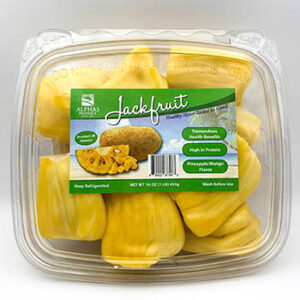If you’re on the lookout for a versatile, nutrient-packed vegetable to add to your meals, look no further than baby bok choi. This tender, leafy green is a staple in many Asian cuisines and has been gaining popularity worldwide for its mild flavor and impressive health benefits. Whether you’re a seasoned chef or a home cook looking to diversify your vegetable repertoire, baby bok choi deserves a spot on your grocery list.
What is Baby Bok Choi?
Baby bok choi, also known as pak choi or Chinese cabbage, is a type of leafy green vegetable belonging to the Brassica family, which includes other nutrient-dense vegetables like kale, broccoli, and Brussels sprouts. As the name suggests, baby bok choi is harvested early, resulting in smaller, more tender leaves and stems compared to mature bok choi.
Nutritional Powerhouse
One of the standout features of baby bok choi is its nutritional profile. It’s low in calories yet high in essential vitamins and minerals, making it an excellent choice for health-conscious individuals. Here’s a quick look at what this leafy green offers:
- Vitamins: Baby bok choi is rich in vitamins A, C, and K. Vitamin A supports eye health, vitamin C boosts the immune system, and vitamin K plays a crucial role in bone health and blood clotting.
- Minerals: This vegetable is also a good source of calcium, potassium, and magnesium, which are vital for maintaining healthy bones and muscles.
- Antioxidants: Baby bok choi contains antioxidants like beta-carotene and lutein, which help protect cells from damage and reduce the risk of chronic diseases.
- Fiber: With its high fiber content, baby bok choi aids in digestion and helps maintain a healthy gut.
Culinary Uses
One of the reasons baby bok choi is so beloved in the kitchen is its versatility. Its mild flavor and crisp texture make it suitable for a variety of dishes. Here are some popular ways to incorporate baby bok choi into your meals:
- Stir-Fries: Baby bok choi is a common ingredient in Asian stir-fries. Simply sauté it with garlic, ginger, soy sauce, and your choice of protein for a quick and delicious meal.
- Soups: Add baby bok choi to soups and broths for a nutritious boost. It pairs well with both clear broths and creamy soups.
- Salads: Raw baby bok choi can be used in salads. Its tender leaves and crunchy stems provide a delightful contrast in texture.
- Grilled or Roasted: For a unique twist, try grilling or roasting baby bok choi. A light drizzle of olive oil and a sprinkle of salt and pepper are all you need to bring out its natural flavors.
- Smoothies: Yes, you read that right! Baby bok choi can be added to green smoothies for an extra nutrient kick without overpowering the taste.
Tips for Selection and Storage
When shopping for baby bok choi, look for firm, vibrant green leaves without any yellowing or wilting. The stems should be crisp and free from blemishes. Once you bring it home, store baby bok choi in the refrigerator’s crisper drawer, where it will keep fresh for up to a week.
Conclusion
Baby bok choi is more than just a trendy vegetable; it’s a delicious and nutritious addition to any diet. Its versatility in the kitchen and its array of health benefits make it a must-try for anyone looking to elevate their culinary creations. So next time you’re at the market, pick up some baby bok choi and discover the many ways this underrated green can enhance your meals. Happy cooking! Contact Alphas if you’d like to order Baby Bok Choi or anything else!


